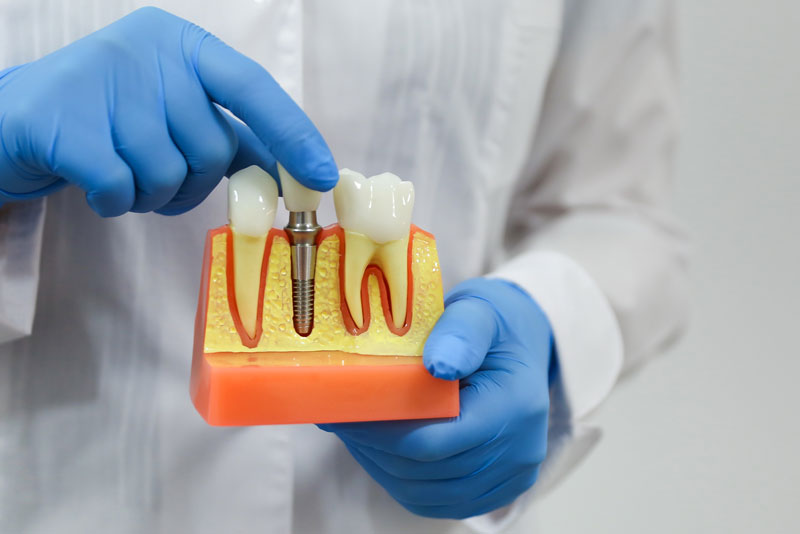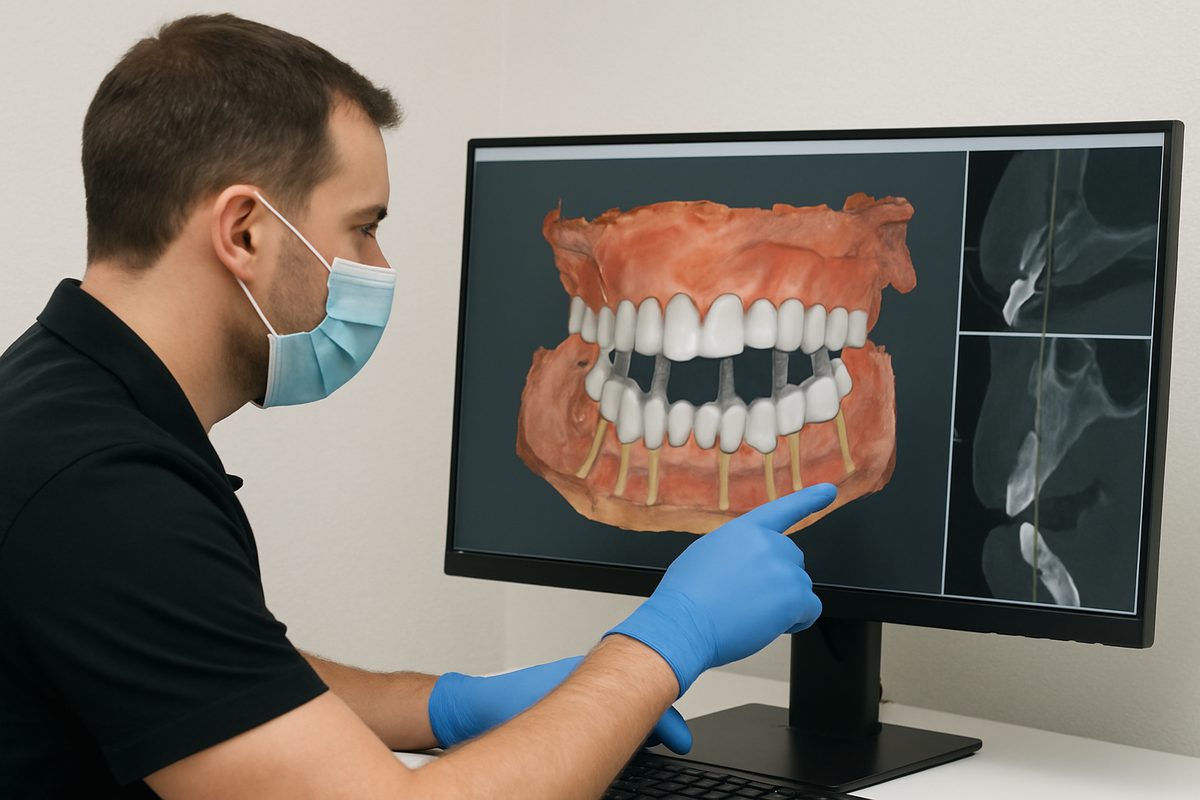Blog - [City], [state]
Tips, Facts, And The
Latest In Dentistry

How Are Dental Implants Put In? Your Step-By-Step Guide
Posted in Dental Implants

If you’re asking, how are dental implants put in, this guide gives a clear, step-by-step answer. You’ll learn how implants work, what happens at each visit, typical healing times, common risks, and practical next steps if you want implants.
This is written for anyone considering one tooth, several teeth, or a full-arch solution like All‑on‑4. Read on for plain-language steps and what to expect from consultation to final crown.
How dental implants work
Dental implants replace missing teeth with three main parts:
- Implant (root): a titanium screw placed in the jawbone that acts like a tooth root.
- Abutment: a small connector attached to the implant.
- Crown: the visible tooth-shaped restoration that fits on the abutment.
Implants fuse to bone through a process called osseointegration. The bone grows around the titanium implant, locking it in place. That strong connection gives better chewing power, stability, and a more natural feel than dentures or bridges. Implants also protect nearby teeth because they don’t need support from adjacent teeth like a bridge does.
Step-by-step: how are dental implants put in
Consultation & digital planning
First, your dentist evaluates your mouth and overall health. Modern planning uses CBCT (3D) scans, digital X‑rays, and intraoral photos to map bone shape, density, and nerve locations. These images help the dentist choose the right implant size and position. Many practices create a digital treatment plan and, when needed, a 3D surgical guide for precise placement.
Preparing the site
Not every case is ready for implant placement right away. Common preparatory steps include:
- Tooth extraction if a damaged tooth needs removal.
- Bone grafting if there’s not enough jawbone to support an implant (healing can take several months).
- Sinus lift for upper-jaw implants if the sinus is too low.
Timelines vary. Some patients proceed in a few weeks; others need months for grafts to heal before implant surgery.
Implant placement surgery
On surgery day, you’ll get local anesthesia and often sedation if you prefer. The dentist makes a small opening in the gum, uses guided drilling to make a precise slot in the bone, then inserts the implant. The gum is closed over or around the implant. The procedure is usually well tolerated and often takes less than two hours for a single implant.
After surgery, you’ll get instructions for pain control, swelling, and care. Short-term side effects like mild pain, bruising, and swelling are normal.
Healing and osseointegration
After placement, the implant needs time to fuse with bone. Typical healing is about 3–6 months depending on location and bone quality. During this time, you may wear a temporary crown or denture so you can eat and smile while the implant integrates.
Abutment and final crown
Once the implant is stable, the dentist attaches the abutment and takes digital impressions for a permanent crown or prosthesis. Crowns can be cemented or screwed on. For full-arch cases, an All‑on‑4 protocol uses four implants to support a fixed prosthesis. Final restorations are designed for fit, color, and function.
Recovery, risks, and long-term care
Short-term side effects include swelling, mild pain, and some bleeding. Contact your dentist if you have severe pain, heavy bleeding, fever, or signs of infection. Rare risks include nerve irritation or implant failure.
Tips to help healing:
- Keep the surgical area clean per instructions.
- Eat soft foods for the first few days.
- Avoid smoking — it slows healing and raises failure risk.
- Attend scheduled follow-up visits and cleanings.
With good care, dental implants have very high success rates (often above 90–95%) and can last for decades. Regular dental checkups and home care are key to long-term success.
Looking for implants? About Dental Arts of Oklahoma and next steps
Dental Arts of Oklahoma offers technology-driven implant care, including CBCT imaging, digital planning, and All‑on‑4 options. Dr. Soren Michaelsen leads the practice with a focus on precise, comfortable treatment using modern tools.
For your implant consultation, bring recent dental records, a list of medications, and any images you have. The team will review your medical history, take scans, and explain options and timelines.
If you want to learn more about how are dental implants put in for your situation, schedule an implant consultation with Dental Arts of Oklahoma to get a personalized plan and next steps.




